Adopt a sustainable hybrid workplace model
Humans have adapted to change in their environment for centuries. So far, the 21st century has only accelerated that trend.
With a pandemic still in our midst, many organizations have struggled to improve teamwork and collaboration in the workplace. Research article headlines about the current workforce have read: “The Next Great Disruption Is Hybrid Work.”
However, trusted collaborative teamwork and communication technology partners like System Soft Technologies believe the disruption will only prevail if you’re not prepared.
The use of a hybrid work environment fueled by digital communications is increasing throughout organizations. Driven by this trend, 46% of the workforce is planning to move because they can now work remotely. And remote job postings on LinkedIn have increased more than five times since the pandemic began.
Tech-wise, weekly meeting time has more than doubled for Microsoft Teams users since February 2020. And there’s been a 40.6 times increase in emails delivered during February 2021 versus February 2020.
Adopting a sustainable modern workplace model has never been more essential to improve your internal work collaboration and ease communication with your partners and customers.
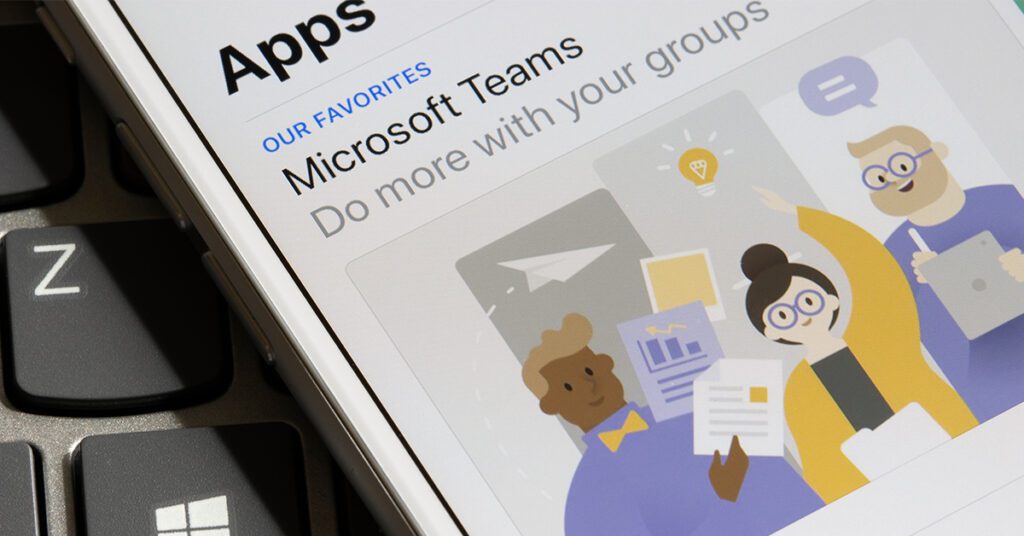
What Are the Struggles with Remote Teamwork Collaboration?
A year ago, organizations and their teams were forced to pivot, resulting in work from home and virtual team collaboration. Unfortunately, this rapid shift didn’t allow time for those organizations to consider their employees’ physical working environments.
Remote workers have wrestled to find a workspace that’s distraction-free and comfortable. Many have been left to work in chaotic environments. Some have worked from their bedroom. Others have been left to fend for themselves at their kitchen table, while family members cooked around them.
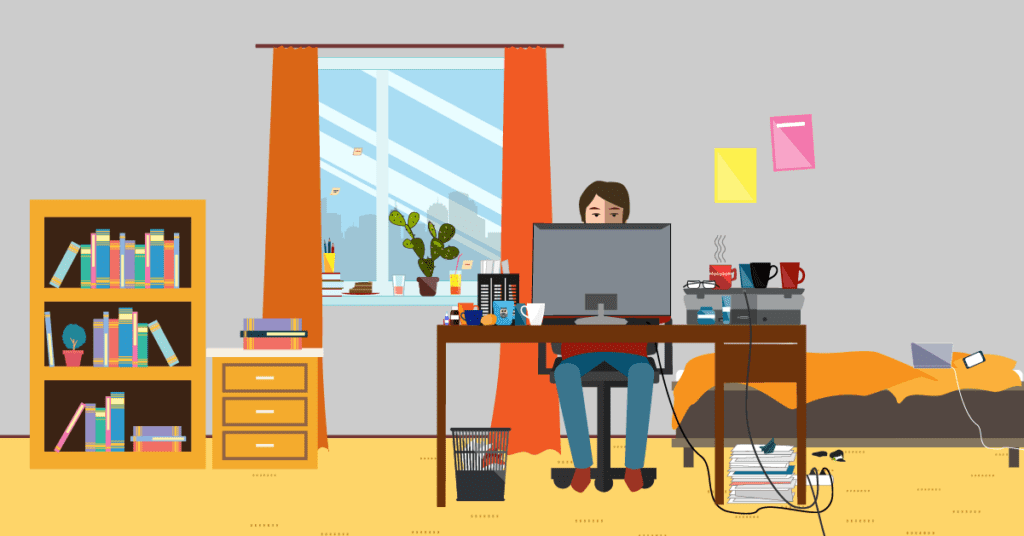
- IT and security teams have grappled to secure company IP addresses, because of remote employees using their private Wi-Fi connections and downloading company content.
- Security threats have increased as phishing campaigns were reported at an all-time high.
- Security professionals have increased their workload to help end users understand the technology they were using.
- Older generations had difficulty connecting to their home internet and company servers and finding company-based apps.
To succeed, education and training for team members were crucial for remote work collaboration.
What’s more, employees have contended with the lack of interaction, saying it has hindered creativity and lowered engagement.
The graph below shows how OXO engineers have self-reported their ability to do work, involving innovative ideas, goals and big-picture thinking, decreased when they moved to remote work.
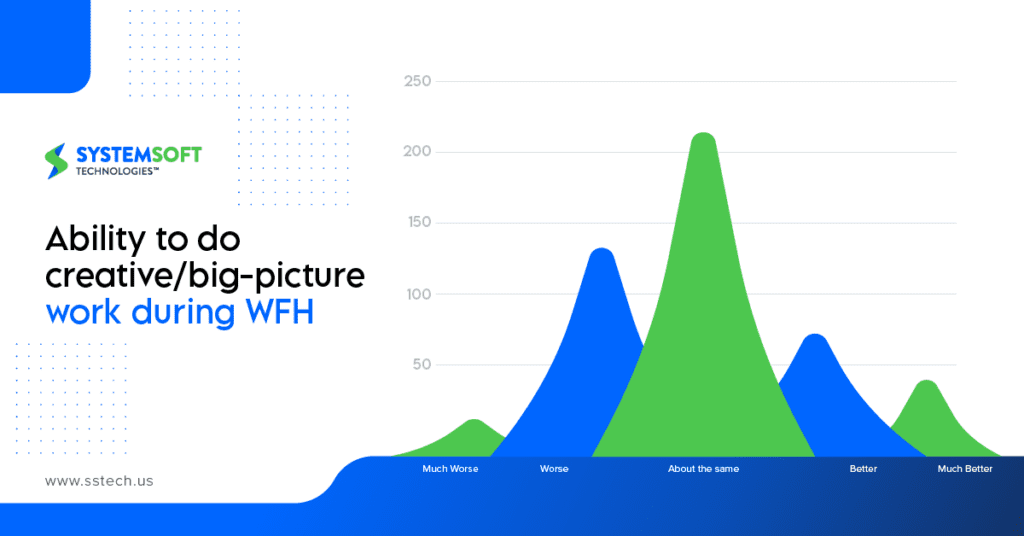
Virtual Meeting Fatigue
A recent study by Microsoft, where the brain activity of 12 people was followed using psychological signal monitoring, has revealed video meetings lead to fatigue.
Meeting fatigue is a common pain point for remote workers. Long hours of hosting and attending virtual meetings and viewing a computer or laptop screen for up to eight hours, with no real human interaction, causes people to reach peak exhaustion.
The study has shown brainwave patterns linked to stress and overwork were higher when collaborating in a remote setting, instead of in person. Something interesting and unexpected: Brainwaves suggested it was more difficult for two people—who, at first, collaborated remotely—to work together later in person.
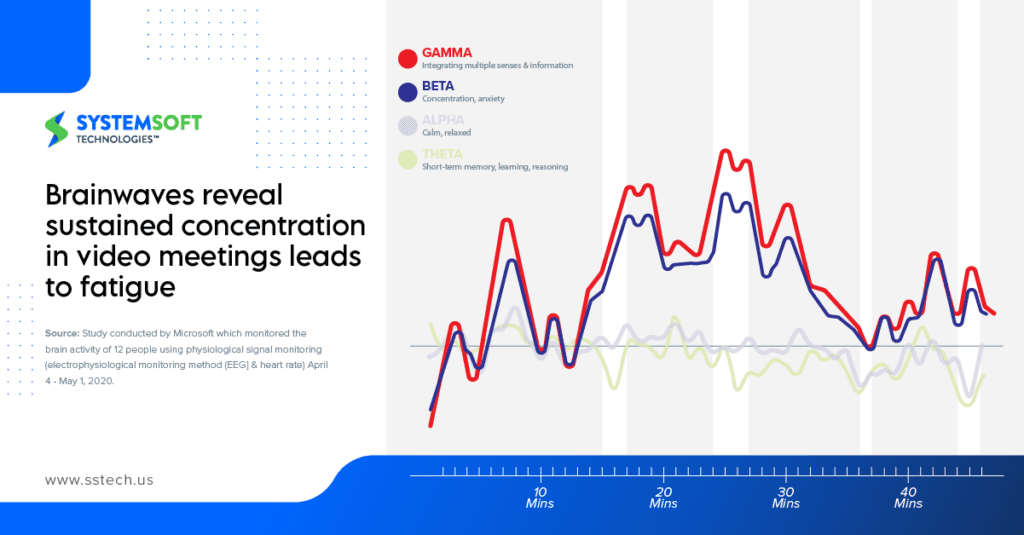
How to Prepare for a Hybrid Workplace
Modern Workplace solutions like System Soft’s resolve hybrid workplace disruption by partnering with organizations to help them effectively connect, create and collaborate. With the deployment, adoption and ease of app customization, Microsoft Teams allows for increased productivity, resulting in better business outcomes.
Informal and spontaneous interaction has suffered, as organizations have transitioned to remote work, affecting both communication and collaboration.
With Microsoft Teams’ capabilities, informal and spontaneous interaction in a hybrid work environment has become simpler, using features like Microsoft Whiteboard. Whiteboard creates an inclusive place, where teams can add sticky notes and text, and drag and drop items, as needed.
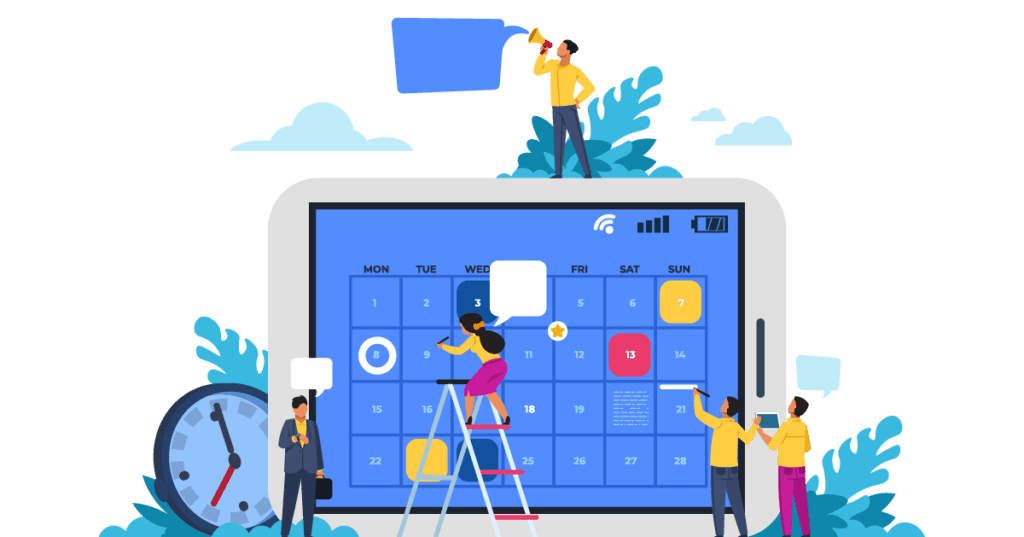
Meetings have always been a fluid category in terms of quantifying the amount of work done. But nowadays, as hybrid work is needed, organizations realize meetings are crucial to carrying out projects and tasks.
Microsoft Teams allows you to successfully connect with others. Together Mode, another Teams feature, makes you and your colleagues feel like you’re in the same room.
If you’re queuing up for a large meeting, the Gallery View feature is the way to go. It allows you to see up to 49 participants at the same time.
If you wish to have a more customized experience during your meetings, check out the feature Dynamic View. It allows you to customize and control how you see shared content and other meeting participants.
These are just some of the Microsoft Teams features that can help you and your team pivot into the future of hybrid work.
Conclusion
System Soft can be your trusted, Modern Workplace partner to improve work collaboration, helping you along your journey to a hybrid work environment.
We assess your current digital workplace and thoroughly listen to you and your teams’ needs. Together, we can implement, deploy and customize your Modern Workplace solution.
This can be crucial. It’s becoming clearer organizations must move away from an office-centric design and, instead, adopt a human-centric design. An office-centric model is designed with location at its core. Whereas a human-centric model designs with the individual at its core.
In the hybrid environment, your workforce will no longer solely run in one location. Rather, it will move fluidly between multiple locations. As such, a human-centric model is a better fit for and environment in which your employees, not your location, are the pillar.
Can’t wait to pivot into the future of work? Your organization can get all the benefits Microsoft Teams has to offer now.
Ready to start building a powerful team with strong work collaboration? Find out how System Soft can help you collaborate better. Get started today.
About the Author: Whitney Church

As Modern Workplace Solutions Architect at System Soft Technologies, with more than 16 years of enterprise collaboration and solutions experience, Whitney can gain a thorough understanding of an organization’s hybrid workplace software by assessing its needs, then building a strategy and setting it up for long-term success. She worked directly with Microsoft during the early days of SharePoint, OneDrive and Teams, seeing firsthand the evolution of Modern Workplace solutions and developing industry best practices.
